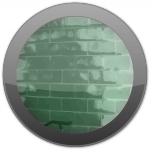Water Intrusion

What You Need to Know
Water intrusion events must be responded to as soon as possible as mold will start to grow in as little as 24-48 hours after the event started
It is important to segregate out building materials that can be dried from those that must be disposed of
Moisture mapping of impacted areas should be performed to delineate extent of affected areas
Infrared cameras and moisture meters are essential tools in characterizing an impacted area as “wet”
What You Need to Do
Shut off the water and ensure safety of occupants
Perform careful examination delineating extent of the issue and if mold is found, proceed as per mold section above
If visible mold is suspected, do not open any wall cavities or other concealed areas which might have had water impact
If mold is not present, dry down wet areas quickly exposing concealed areas, adding dehumidification, air movement, and heat (as needed)
Myths and Misconceptions
If there is water damage or staining, there will also be mold present-FALSE
Prompt response will mitigate moisture issues-TRUE
Water intrusion caused by water (other than clean water) must be handled as a potential bacterial contamination-TRUE
Expert Services:
Commercial Property
Due Diligence
- Site Investigations/Inspections
- Cause of Loss Identification
- Regulatory Review
- Recommendations for Regulatory Compliance and Liability Protection
- Emergency Response
Project Scope Development: New Construction, Renovation/Demolition
- Creative Scope of Work Development
- Liability Minimization
- Project Oversight
- Environmental Sampling
- Client Interface
Emergency Response
- Inspections/Moisture Mapping/Material Impacts
- Environmental Sampling
- Exposure Evaluation/Health Risk Consulting
- Contractor Coordination
- Media Interface
Operations and Maintenance
Expert Testimony
- Environmental Risk
- Employee/Occupant Health Risk
Education and Training
- Risk Management Environmental Toolkits
- Operations and Maintenance Programs
- Competency Based Education Programs
- Water Intrusion Plans
- Hazard Assessment Critical Control Point (HACCP) Programs
- White Paper Development
Webinars/Seminars- Managing Risk and Liability
- Asbestos
- Lead Based Paint
- Mold and Water Intrusion
- Wildfire Impact
- Legionella
- Bedbugs
- Vapor Intrusion
- Indoor Air Quality
- Norovirus
Commercial Property Risk Alert Service
- Emerging Environmental Risk Information and Recommendations
- Emerging Health Risk Exposure Information and Recommendations

